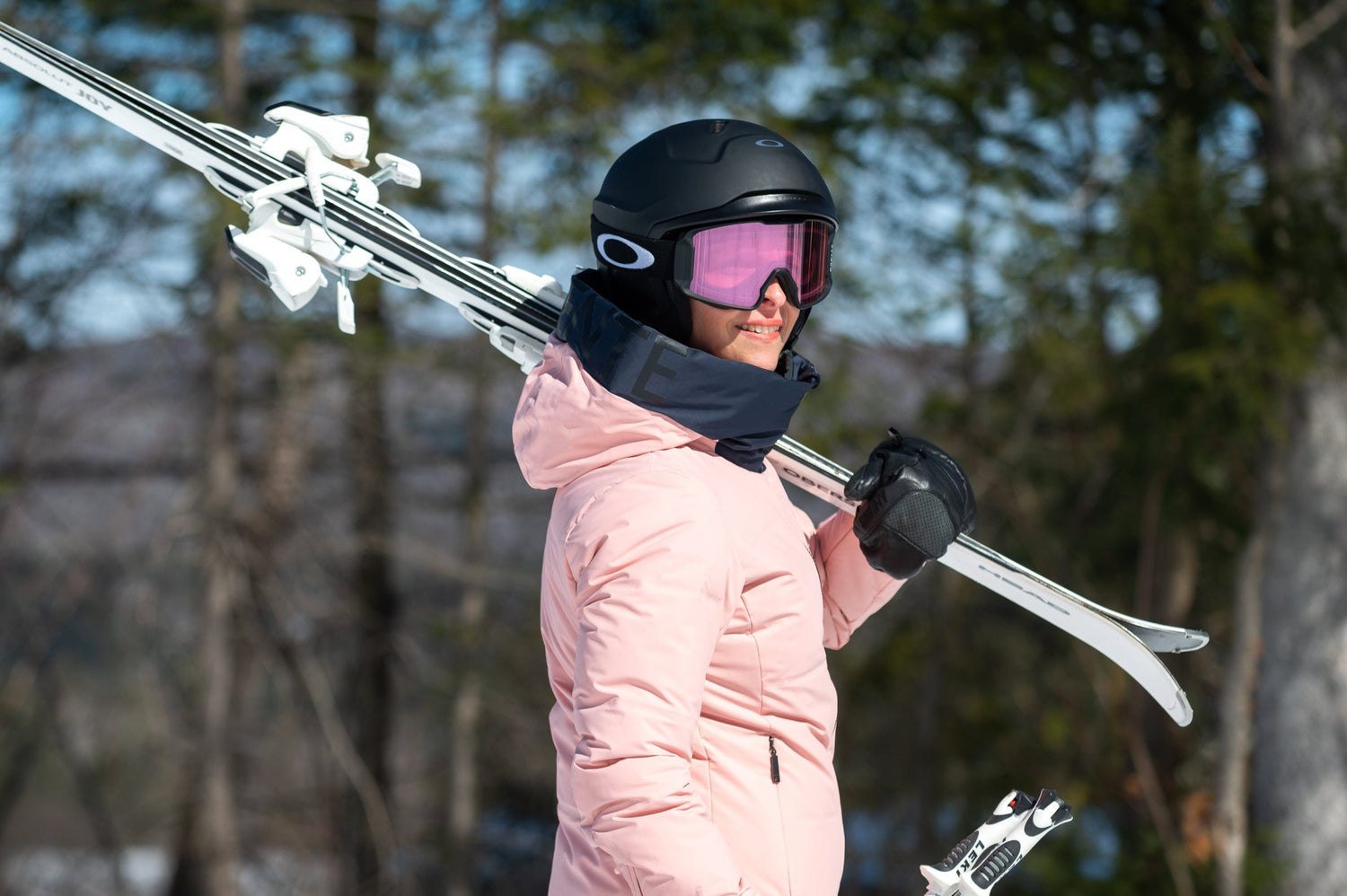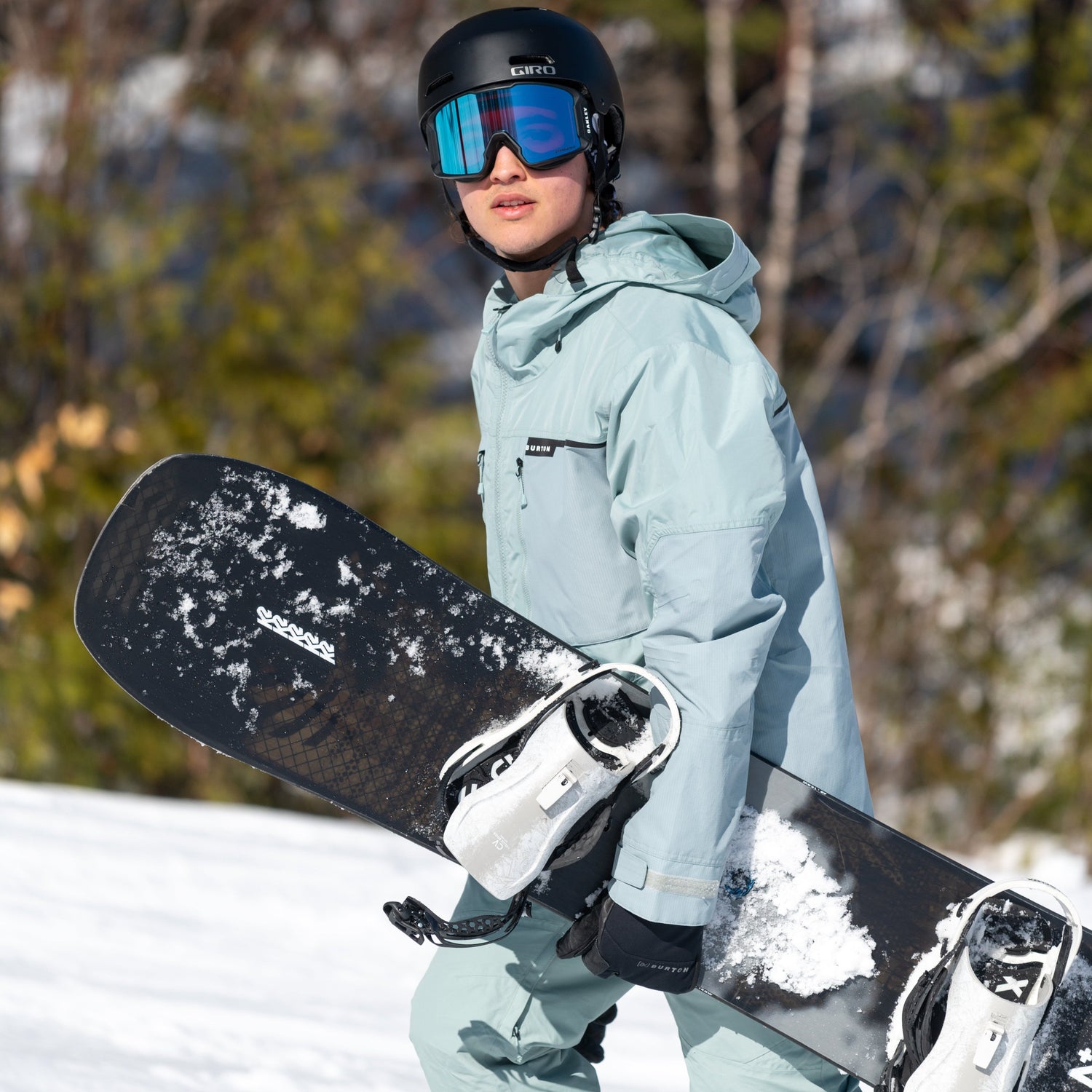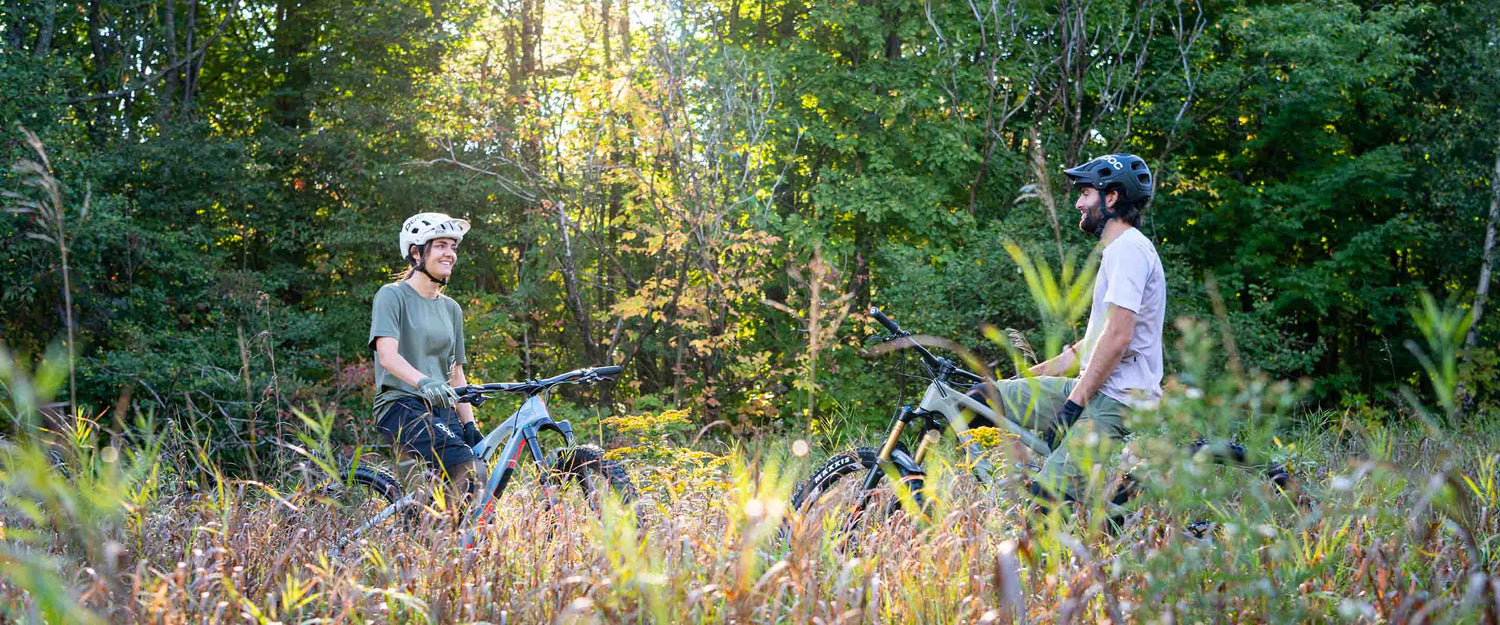Monday morning. You have a notification on your phone: your group of friends is stoked about their weekend of mountain biking; you spent yours wanting to get out and enjoy the outdoors. Enough is enough: it’s high time you got one of your own! But what do you need to know about mountain biking before taking the plunge?
Mountain biking is for anyone who wants to ride off the beaten track. Specifically designed to perform on mountain trails and rugged terrain, mountain bikes are characterized by their knobby tires, straight handlebars, geometry and suspension system.

Identifying Your Needs for a Mountain Bike
Before embarking on your search to find the bike of your dreams, you should identify your needs based on certain features.
- Aluminum or carbon frame
- Suspension and travel
- 27.5- or 29-inch wheels
- Size
- Type of mountain bike
Suspension: Single or Dual?
Mountain bikes are divided into two categories of suspension setups: single (called hardtails) and dual suspension (also known as full suspension).
Hardtails
The first category has one set of shocks on the fork, which helps absorb bumps. This kind of bike is ideal for getting the hang of having suspension and riding on mountain trails without too many obstacles.
Pros
- Efficient pedalling
- Good for climbing
- Lighter
- Ideal for beginners and riding terrain without many obstacles
- Easy maintenance

Dual Suspension
Full suspension mountain bikes have two sets of shocks: one on the fork and one on the frame. This means they have better shock absorption on more technical trails. Plus, having dual suspension is perfect for taking off on jumps.
Pros
- Very versatile and suitable for many types of trails
- Ability to absorb shocks on technical trails
- More stable on downhills
- Boosts beginners’ confidence on a bike

Suspension Performance Levels
Both the fork and rear shocks are divided into several types that have various names for different brands. Some manufacturers have also developed their own technologies.
The stiffness of front and rear suspension is adjusted by adding or releasing air. The coil often seen on the frame of some rather high-end bike models is adjusted by changing its tension.

Suspension Travel
Here’s where we cover the much-discussed topic of suspension travel. You will see it described in millimetres in the bike’s technical specifications. This characteristic of the bike is roughly its absorption capacity according to the terrain’s technical difficulty level (slope angle, rocks, roots, jumps, etc.). In other words, the bike’s ability to handle obstacles.
Most people look for a bike with 120 mm or more of travel to be able to tackle mountain bike trails.
Ask yourself the following questions to determine how much travel is best for you:
- What do you want to accomplish on the trails?
- What are your strengths in mountain biking?
- What types of terrain do you want to ride?
- What types of trails do you want to make easier?
Aluminum and Carbon Frames
Mountain bikes are made of aluminum, carbon or a combination of both materials. Aluminum mountain bikes are cheaper than carbon mountain bikes.
Aluminum Frame
Pros
- Less expensive
- Outstanding value for money
- Durability
Cons
- A bit heavier
- As far as looks go, the welds are visible in certain places

Carbon Frame
Pros
- Beautiful seamless look
- Light
- Durability
Cons
- More expensive
Wheel size: 27.5 or 29 inches
When you scroll down the list of technical aspects of a mountain bike, you’ll notice that models have 27.5- or 29-inch wheels. Each diameter has its advantages.
Roughly speaking, 29-inch wheels easily roll over obstacles, such as rocks and roots. They absorb impacts well and have excellent traction. The 27.5s are the best of both worlds between 26s—which were previously more popular—and 29ers. This diameter enables being precise and nimble on more technical terrain without compromising stability. Another advantage is that 27.5-inch wheels are also less subject to inertia, which means you can accelerate faster.

What Is the Best Type of Bike for Mountain Biking?
There are different types of mountain bikes. Each style will work well for different kinds of bikers, depending on what they want to experience in the mountains. Moreover, in addition to unisex models, some manufacturers offer mountain bikes for women, such as Scott’s Contessa line.
Cross-Country Mountain Bike
Cross-country bikes are perfect for getting started in the sport. Lightweight and with 100 mm to 120 mm of travel, they are ideal for buffed out, flowy trails. The head angles are steeper, which makes this type of bike perform well in flat terrain or when climbing. Cross-country models can be hardtails or have full suspension.
This type of bike is for you if:
-
You’re just starting out and want to learn how to mountain bike.
-
You will be riding mainly flat trails or trails that don’t have very steep descents.

Trail Mountain Bike
Trail bikes are the most versatile of the bunch. With suspension travel between 130 mm and 140 mm, they do well on most mountain bike trails. They are efficient going uphill and more agile descending than cross-country bikes.
Trail bikes are usually full suspension. They’re for those who want to explore the trails without necessarily taking on dizzying descents.
This type of bike is for you if:
-
You want to explore different types of terrain.
-
And you are looking for a versatile bike that can be efficient on uphills and stable on downhills.
-
You want to develop your skills and start exploring more technical descents.

Enduro Mountain Bike
Enduro bikes are for cyclists seeking aggressive descents. With a slacker head angle and about 150 mm to 160 mm of travel, they are more stable, which helps handling obstacles, such as rocks and roots.
This type of bike climbs well even though they are often longer, which makes them very stable on steep descents.
This type of bike is for you if:
-
You want to ride more downhills with technical challenges, rocks, roots, slabs and jumps.
-
You’re looking for bike that’s stable on descents and will increase your confidence for certain obstacles and technical, steep sections.
-
You mainly want to ride in bike parks.

Downhill Mountain Bike
Are descents what you’re truly after? You need a downhill mountain bike! With 200 mm or more of travel, they have extremely slack head angles that make them super stable on descents. They’re the champions of shock absorption. But this type of bike is burly, which makes them less-than-ideal climbing companions. That’s why you use a chairlift so that you can make the most of their natural habitat: flowy or technical descents—and especially jumps.
This type of bike is for you if:
- You ride in bike parks!

Are you looking for a mountain bike for kids? Check out our article How to Choose a Kids’ Mountain Bike.
Now that you have honed your knowledge, do you want to get out and ride? Visit one of our two stores and meet one of our experts. He or she will help you find the right mountain bike model. The next step? Enjoying the mountain bike trails! For some ideas of places to visit that will be right for your skill level, check out our article on mountain biking destinations.




